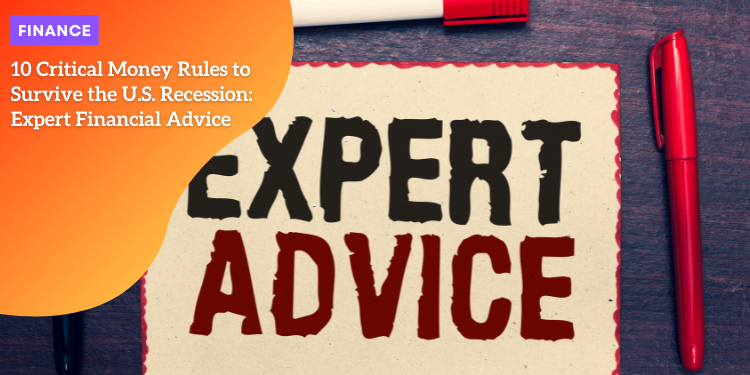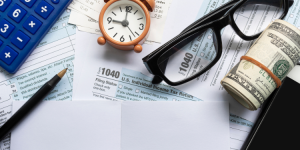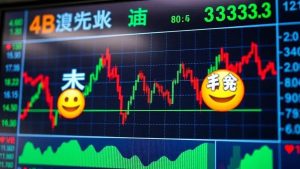10 Critical Money Rules to Survive the U.S. Recession: Expert Financial Advice

Understanding the Current Economic Landscape
A New Wave of Uncertainty
The U.S. economy shrank by 0.3% in the first quarter of 2025, marking the first contraction in three years.
Experts now warn that we’re “on the precipice” of a recession, and the mood among Americans is shifting from optimism to unease.
The biggest concern isn’t just the slowdown—it’s the speed and wild swings of today’s market.
Volatility feels very different this time, with rapid reactions to policy changes and headline news, leaving both investors and consumers on edge.
Volatility Like Never Before
Financial advisers who’ve weathered many cycles agree: This round of market turbulence stands out.
At times, it seems a single tweet or announcement sends stocks sharply up or down within hours.
The intensity has caught even pros off guard.
These moves, amplified by technology and global events like tariffs, make it harder to predict what’s coming next.
Why This Matters for Households
As economic growth stalls, the impact ripples everywhere—from job security to grocery bills. Many families are feeling the squeeze.
People are thinking twice about big purchases and focusing more closely on their true needs.
Facing the unknown, it’s more critical than ever to get your financial basics in order.
Looking ahead, staying grounded and focusing on practical steps will help you prepare for whatever comes next.

Rule #1: Build a Bigger Emergency Fund
As layoffs rise and the job market gets tougher, having a strong financial safety net has never been more crucial.
Aim to set aside enough money to cover 6 to 9 months of essential expenses, such as housing, food, utilities, and transportation.
The average job search now drags on for about 22.8 weeks, or nearly six months, and that number is rising as the economy slows.
This makes a beefed-up emergency fund essential, especially for those in industries hit hardest by downturns.
Don’t forget inflation. Prices are climbing, and what felt like enough last year might not cut it now.
Regularly revisit your budget and bump up your savings target as the cost of living rises.
By building your cash cushion, you’ll have the breathing room to ride out tough times without derailing long-term financial goals.
Ready to fortify your finances? There’s more to surviving a recession than just saving—preparing for job changes is also key.
Rule #2: Prioritize Job Stability Over Job Hopping
Why Job Security Matters More Than Ever
With the economy shrinking and layoffs on the rise, staying put in a stable job can be a game changer for your financial health.
Job hopping may have felt like a smart move in a booming market, but in today’s climate, it’s riskier.
Recent data shows that younger workers and those recently hired are typically the first to lose their jobs when companies tighten their belts—especially in at-risk industries like manufacturing, construction, or consumer-oriented businesses.
Even seasoned financial advisors stress the importance of job stability during periods of economic volatility.
Evaluating the True Cost of Switching Jobs
Before considering a move, ask yourself: does the new opportunity really offer better long-term prospects, or just a short-term bump in pay?
The average job search now stretches nearly 23 weeks, which means a hasty switch could leave you unemployed longer than you expect.
Add in rising prices and a turbulent market, and it’s clear that the risks of changing jobs might outweigh the rewards for many workers.
By making careful, well-researched decisions about your career path now, you can reduce your chances of hardship and be better prepared for whatever the economy throws your way.
Rule #3: Adjust Your Stock Market Expectations
Shifting from Peak Performance
After enjoying two years of outsized gains—23% in 2024 and 24% in 2023—the reality for investors is hard to ignore: this stellar run most likely won’t repeat itself in 2025.
Financial experts are already dialing back expectations for the S&P 500, signaling a slowdown ahead.
If you’re a long-term investor, this shouldn’t throw you off course.
Years of poor performance tend to even out over time, especially if you’re not cashing out in the near future.
Coping with Volatility
Market swings now happen with record speed and intensity.
One financial planner described 2025’s volatility as “unique,” not just in size but in how quickly market sentiment shifts—often reacting in real-time to headlines or policy talk.
Staying calm in the face of this whiplash is key.
Keep Perspective
Rather than chasing quick gains or panicking over dips, remind yourself that markets cycle.
Accept that returns might be flat or modest in the near term.
Patience will help you ride out this unusual period and put you in a stronger position down the line.
Rule #4: Diversify Your Investment Portfolio
Smart Diversification Is More Important Than Ever
With the U.S. economy facing a slowdown, it’s essential to protect your wealth by spreading out your investments.
Experts recommend holding about two-thirds of your stock investments in U.S. equities and one-third in foreign equities to balance risk.
This mix can help you take advantage of opportunities if the U.S. dollar declines and soften the blow if domestic markets dip.
Go Beyond Stocks
Consider alternative investments, like real estate, private credit, or private mortgage lending.
These options don’t always move in step with the stock market and can add stability when stocks are rocky.
But be careful—avoid chasing quick trends or the latest “hot” investment.
Rebalance With Tax Smarts
Start rebalancing your portfolio in retirement accounts first, since adjustments there typically have fewer tax consequences.
This strategy lets you shift your asset mix without a big tax bill, making it easier to adapt quickly in uncertain times.
As volatility continues, maintaining a balanced and thoughtful approach to your investments gives you a firmer footing for whatever comes next.
Rule #5: Consider Roth Conversions
Why Roth Conversions Matter in a Down Market
During market downturns, moving funds from a traditional IRA or 401(k) to a Roth account can be surprisingly smart.
Since your investments may have dropped in value, the amount you convert is smaller.
That means you pay less in taxes now and set yourself up for tax-free withdrawals on future gains when the market eventually recovers.
This lets you “capture any upswing in a tax-free environment” and avoid paying taxes on bigger balances later.
How to Convert Wisely
Before pulling the trigger on a Roth conversion, make sure youhave enough cash on hand to cover the tax bill.
Paying conversion taxes out of your retirement account can shrink your savings and reduce your emergency cushion.
Always use separate savings for this purpose, especially given today’s economic uncertainty.
Many people use Roth conversions as a multi-year strategy, gradually shifting assets over time to better manage taxes and avoid sudden, steep bills.
Consulting a financial advisor is helpful if you’re unsure how a conversion fits into your plans.
With careful steps, you can make the most of a bad market and improve your financial flexibility for retirement.
This strategic approach reflects the adaptability needed in times of economic stress—giving you more options and peace of mind.
Rule #6: Recession-Proof Your Side Hustle
Focus on Services Over Goods
When the economy gets rocky and tariffs start to bite, it’s a smart move to shift any side hustle ideas toward services instead of goods.
Services, like tutoring, pet care, or consulting, are less exposed to the unpredictable costs that tariffs can add to physical products.
In fact, services make up about 70% of the U.S. economy—so there’s real stability and scale in this sector.
Tariffs and Your Business Idea
Tariffs can quickly drive up the cost of imported goods, whether you source products for resale or make things yourself.
If your side hustle relies on products that might be affected, now’s the time to rethink your approach.
Services aren’t just less sensitive to tariffs—they’re also less likely to face sudden cost jumps, making your extra income stream more reliable in times of uncertainty.
Evaluate Your Business Resilience
Take a realistic look at how the current economic environment and new tariffs might impact your side gig.
Ask yourself: Could my side hustle adapt if supply chains tighten or costs soar? Service-oriented businesses offer flexibility and often require less startup capital.
By leaning into services, you create a buffer against economic headwinds and keep your financial footing more secure.
Ready for the next practical money move? Let’s keep building resilience into every aspect of your financial life.
Rule #7: Make Smart Vehicle Purchasing Decisions
Focus on Needs, Not Wants
When shopping for a vehicle, it’s crucial to separate what you need from what you want. With new cars averaging $49,000, making a hasty decision could cost you in the long run.
Experts stress you shouldn’t buy a car just to “beat” potential tariffs unless a purchase was already in your plans.
Take your time, do your research, and only commit if the vehicle truly fits your everyday lifestyle.
Prioritize reliability and utility—think about daily commutes, family needs, and budget, not rare road trips or special features you might rarely use.
Don’t Rush Big Purchases
While tariffs may raise prices, don’t let fear push you into a quick decision.
Rushing might mean you end up with the wrong vehicle or overextend your finances.
Shop around, compare options, and consider how a car fits into your overall budget before you sign anything.
Being methodical now can prevent financial regret later.
Thinking beyond vehicles, let’s look at how your home fits into your overall financial picture.
Rule #8: Reassess Housing in Your Financial Portfolio
Why Too Much House Can Hurt
For many Americans, a home is their biggest asset — but tying up most of your wealth in real estate can be risky.
Just as putting all your money into a single stock makes you vulnerable, overconcentrating in housing leaves you exposed if prices drop, insurance costs spike, or your job situation changes.
It’s a classic case of not putting all your eggs in one basket.
Smart Moves for Younger Buyers
If you’re shopping for your first home, today’s prices are still “sky-high,” with a median around $431,000, and mortgage rates remain volatile.
Experts suggest that younger buyers look at homes on the lower end of their budget.
This approach helps protect you if you face income loss or unexpected expenses down the line.
Aiming for Long-Term Balance
As you build wealth, gradually lower housing’s share of your net worth — aim for about 50% by your 30s and closer to 25% by retirement.
This shift gives you more flexibility and reduces risk as economic and personal circumstances change.
Staying financially flexible lays the groundwork for smarter purchases in all areas of life.
Rule #9: Strategic Purchasing Before Tariff Implementation
Shopping Smarter as Tariffs Loom
With retailers already hiking prices and steeper increases expected by July 4th, timing your purchases matters more than ever.
If you need an essential item—like a reliable appliance, work laptop, or shoes for your kids—buy it soon before tariffs push prices higher.
But don’t get caught up in panic-buying or stockpiling items you don’t actually need.
Financial experts suggest that unnecessary purchases can worsen inflation and strain your cash flow—a double blow during an economic slump.
Instead, make a list and stick to it. Focus only on items you genuinely require over the next few months.
Be wary of retailers’ urgency, and don’t rush into a big purchase because of fear.
Clear-headed, intentional buying builds your financial resilience.
Up next, it’s time to think about creative ways to save, especially as new prices hit the shelves.
Rule #10: Embrace Secondhand Shopping
Shop Smarter, Spend Less
With prices on everything from cars to clothing moving up due to new tariffs, buying secondhand is becoming a go-to strategy for savvy shoppers.
Secondhand markets — whether thrift shops, online marketplaces, or consignment stores — are thriving as more people look for ways to dodge tariff-related price hikes.
Used vehicles, electronics, and fashion items now offer real value, without the sticker shock attached to brand-new products.
Why Used Goods Make Sense
As retail prices climb, expect demand for quality used items to grow.
For shoppers, this means not only saving money, but also finding unique, high-quality options they wouldn’t have thought to consider before.
Embracing a “reuse” mentality benefits both your budget and the environment, especially in uncertain economic times.
Shifting spending habits now can help you make well-informed choices as you adjust for what’s ahead.
Maintaining Perspective During Economic Turbulence
Keeping Calm Amidst the Shifts
During times of economic uncertainty, it’s easy to get caught up in the daily headlines and market swings.
But economies are built on cycles—they rise, contract, and eventually stabilize again.
Even though today’s volatility can feel uniquely intense, especially with rapid policy changes and unpredictable markets, the foundation of smart money management remains the same.
| Habit | Before | After (Long-Term Benefits) |
|---|---|---|
| 💰 Emergency Fund | No dedicated savings for emergencies | A solid emergency fund to cover unexpected expenses and reduce financial stress |
| 💳 Debt Management | Accumulating unnecessary debt | Avoiding unnecessary debt to maintain financial stability and security |
| 💸 Thoughtful Spending | Impulse spending without considering needs | Spending thoughtfully based on current needs, ensuring financial well-being in the long run |
| ⏳ Financial Resilience | Vulnerable to financial instability during economic shifts | Building resilience through foundational financial habits that withstand market fluctuations |
Adapting Without Abandoning Core Principles
Times like these require flexibility. Maybe you need to adjust your savings goals, review your investment plans, or rethink big purchases.
The key is not to let fear drive your decisions.
Keep your focus on resilience—position yourself to thrive when the economic cycle turns positive again.
Next, let’s explore how to apply this approach in practical, everyday ways.






